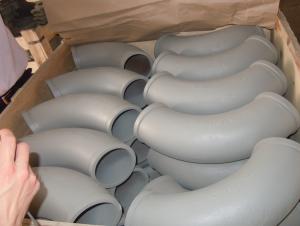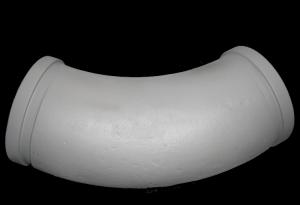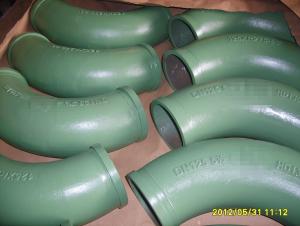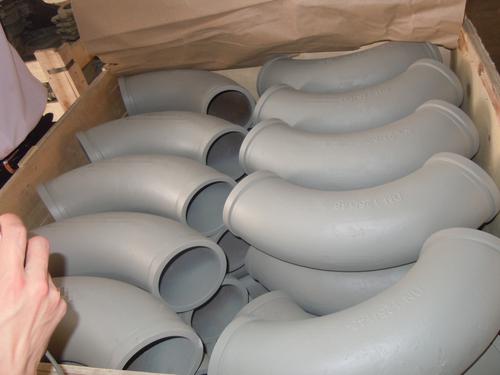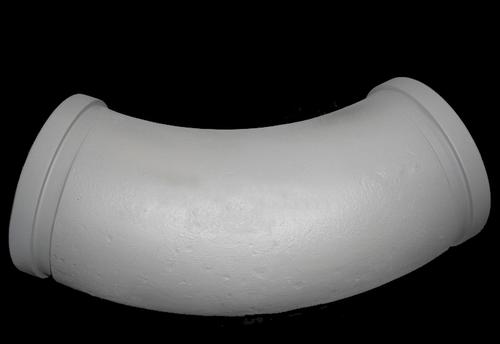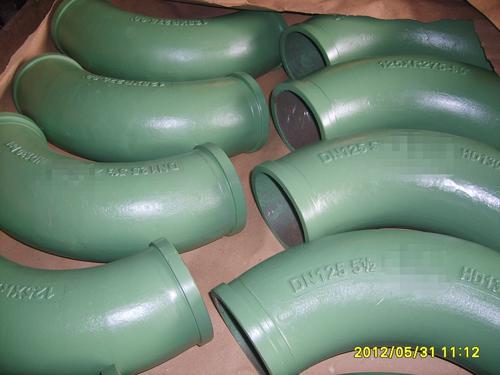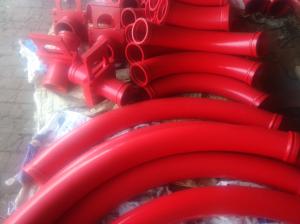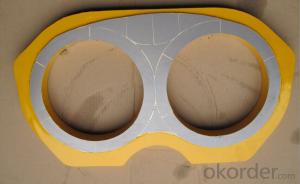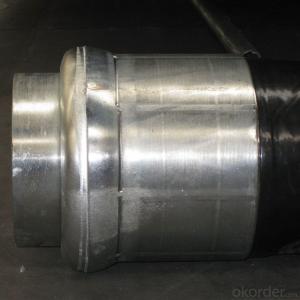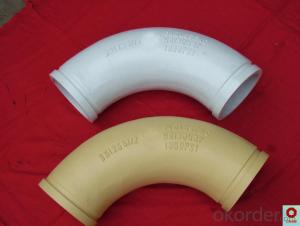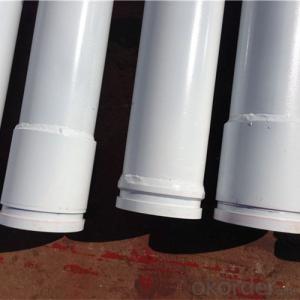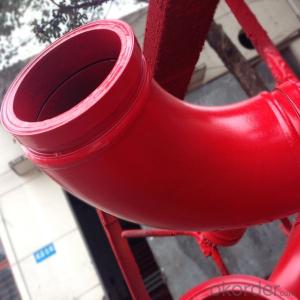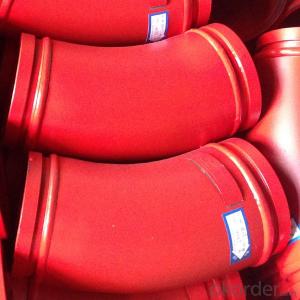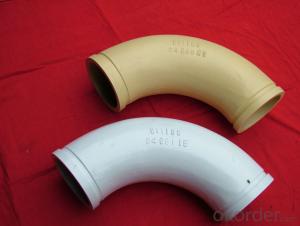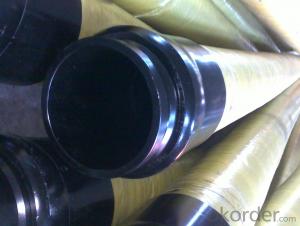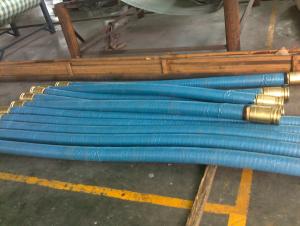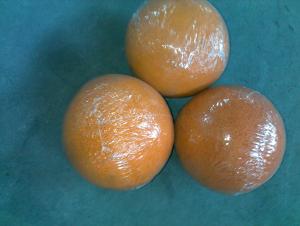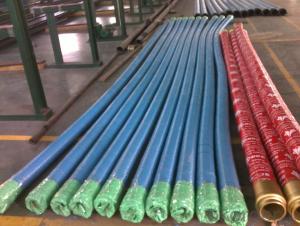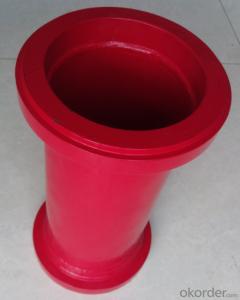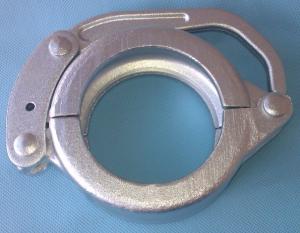Concrete Pump Truck Parts Elbow Bend R275 DN112 148Flange 90DGR Casting
- Loading Port:
- China Main Port
- Payment Terms:
- TT OR LC
- Min Order Qty:
- -
- Supply Capability:
- -
OKorder Service Pledge
OKorder Financial Service
You Might Also Like
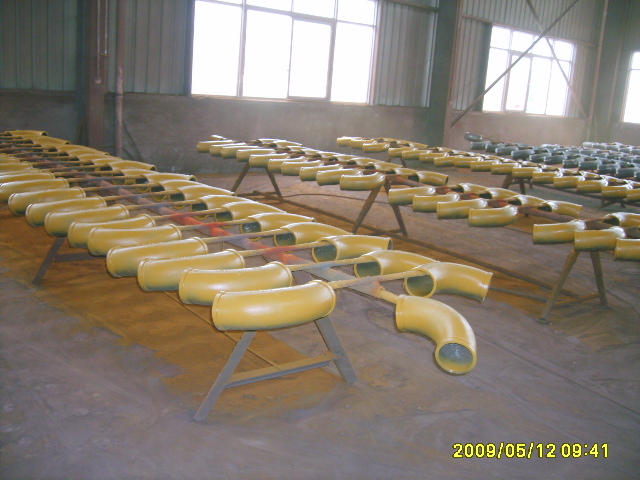
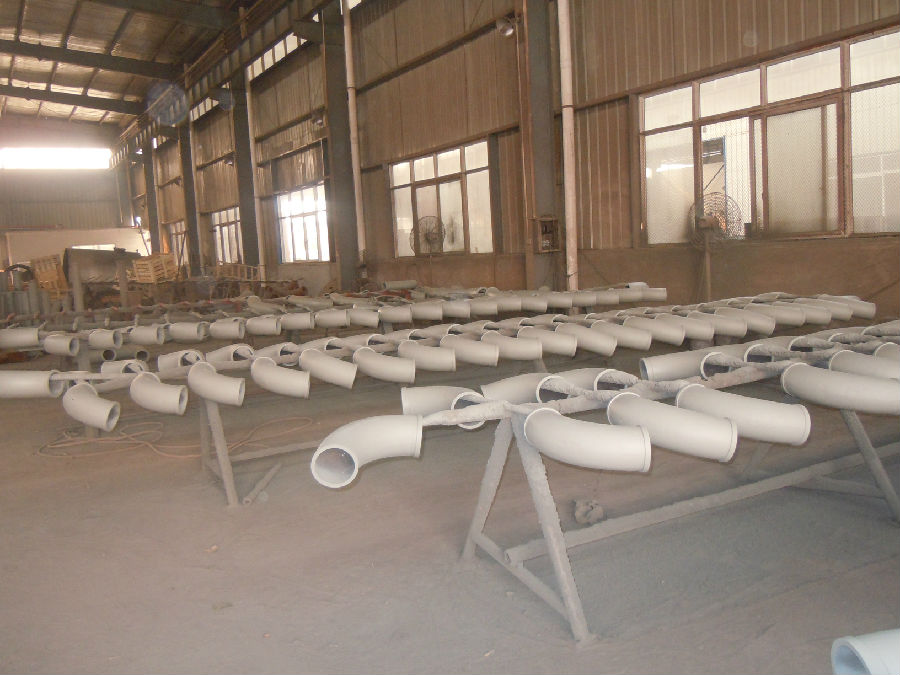
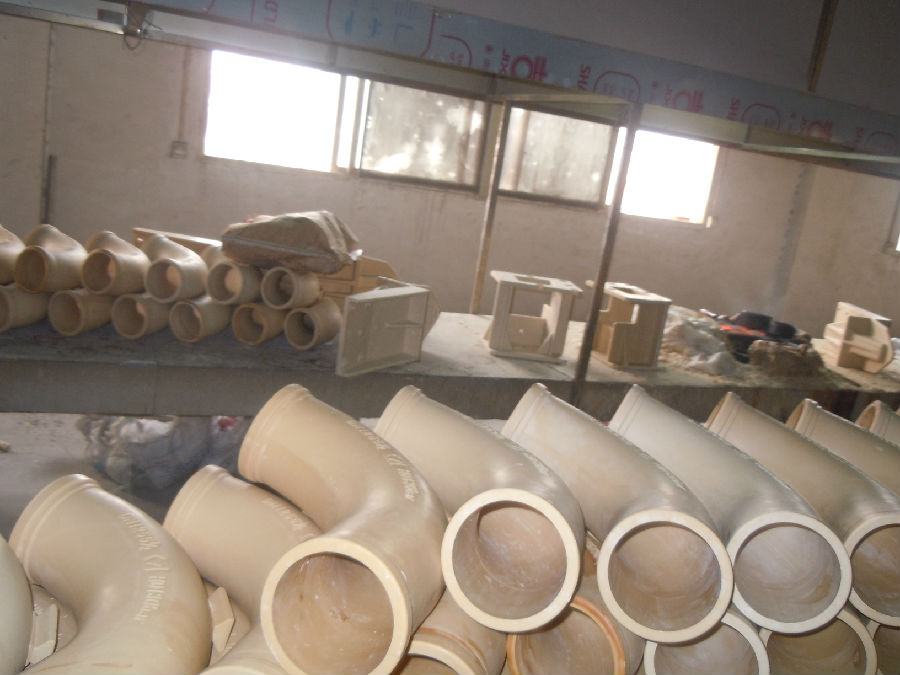
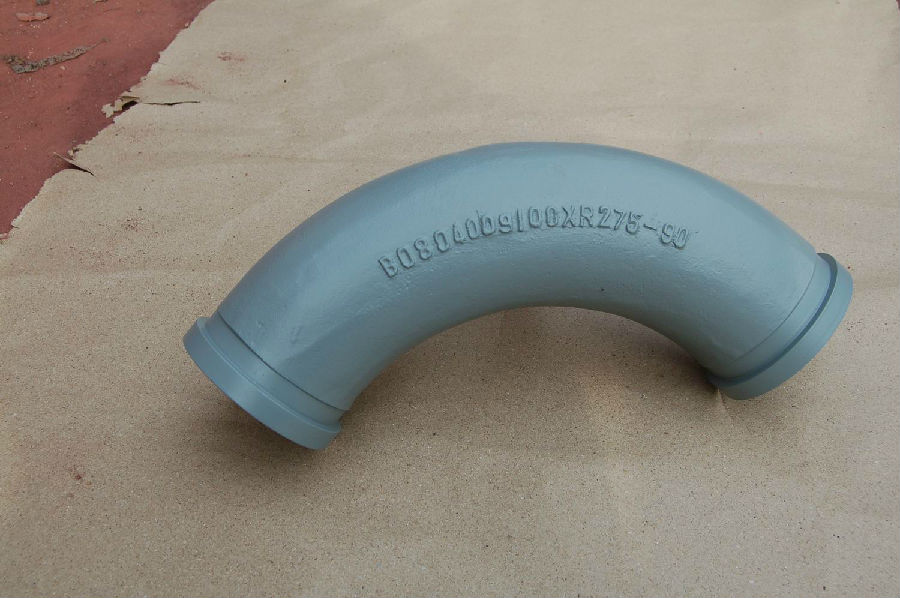
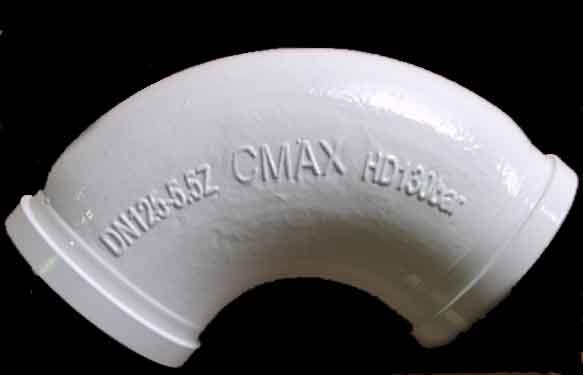
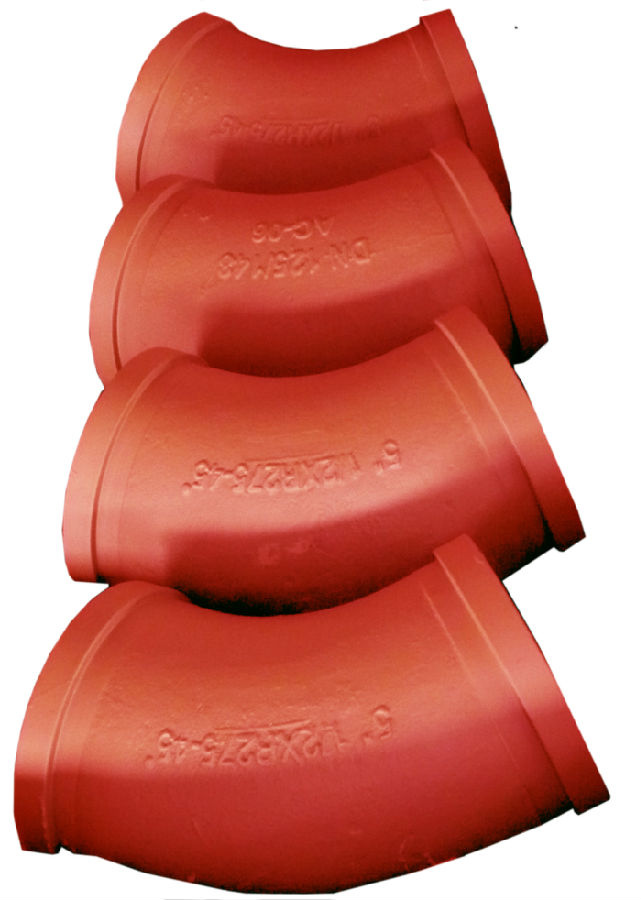
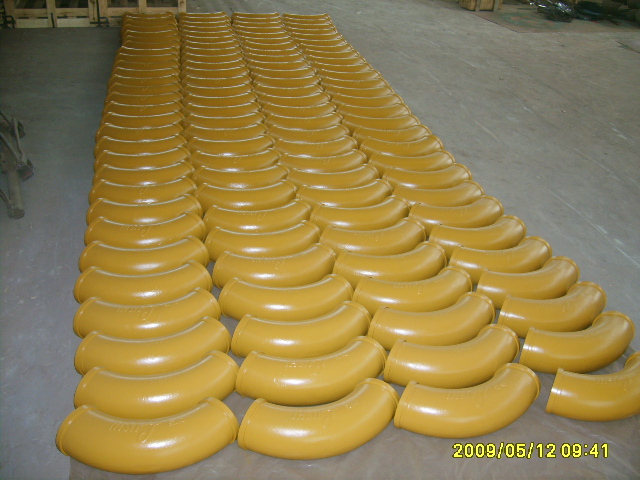
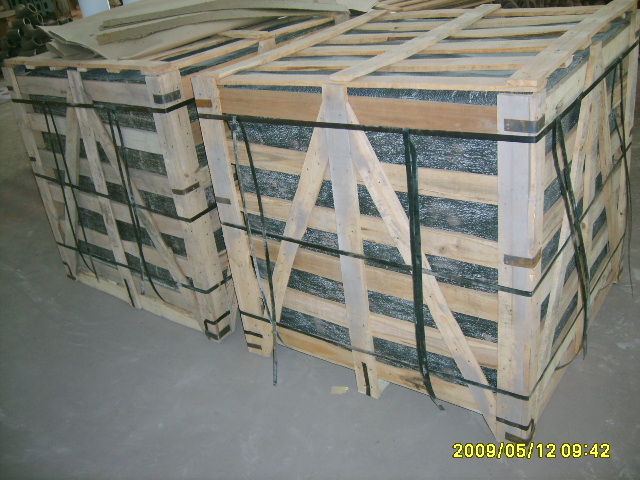
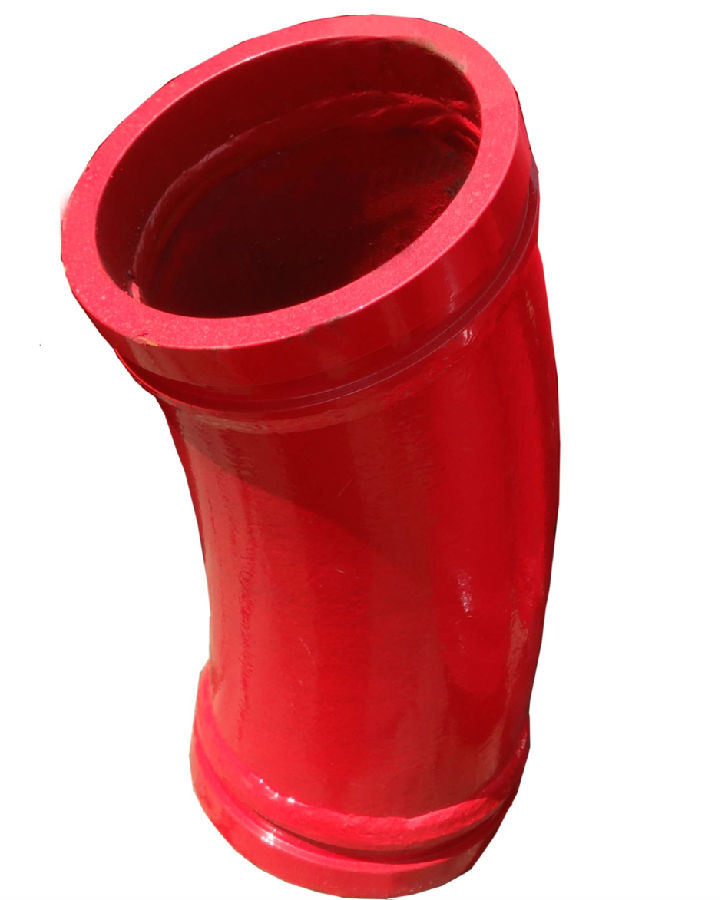
Product Description:
Product Name: Concrete Pump ELBOW DN100
1. Specification of Concrete Pump ELBOW DN100
Dimensions: DN112
Radius: 275mm
Flange: SK, ZX, F&M
Degree: 90
Material: #20 steel, ST52
Thickness: 4.5mm,6mm,7.1mm,7.5mm,10mm,
Working pressure: 180MPa
Notes: total series of concrete pump ELBOW for different brand concrete pump(PUTZMEISTER, SCHWING, CIFA, SANY, ZOOMLION, IHI, KYOKUTO Etc) available from us.
2. Application of Concrete Pump ELBOW DN112
Widely used on concrete pump truck, concrete placing boom, trailer concrete pump etc, for concrete delivery pipe connection.
Our concrete pump bends have been successfully exported to many countries from 1998, Our main markets as below: Middle East, Southeast Asia, America, Brazil, Italy, Russia, South Africa etc
Aiming at the largest concrete pump parts manufacturer, and reliable, professional supplier in China, we can supply concrete pump elbows, delivery pipes, casting or forging couplings, end rubber hoses, rubber pistons, tungsten wear plates, delivery cylinders, and other hydraulic parts, one stop service for your concrete pump parts and accessory business.
3. Package and Delivery of Concrete Pump ELBOW
Every 30pcs put in one seaworthy wooden box, and 20 boxes in one 20feet container.
- Q: Can concrete pump spare parts be pre-assembled or pre-tested before installation?
- Yes, concrete pump spare parts can be pre-assembled and pre-tested before installation. This practice ensures that the spare parts are functioning properly and ready for immediate use, saving time and effort during the installation process. Pre-assembly and pre-testing also help identify any potential issues or defects, allowing for necessary adjustments or replacements before installation, ensuring the smooth operation of the concrete pump.
- Q: What is the name of the pump for concrete transportation?
- The power of the concrete pump truck engine power is transmitted to the hydraulic pump or rear axle through the power transfer case, push the piston to drive the hydraulic pump concrete pump. Then use the pump cloth on the rod and delivery pipe, the concrete delivery to a certain height and distance.
- Q: What are the signs of a malfunctioning concrete pump control valve?
- There are several signs that can indicate a malfunctioning concrete pump control valve. Some of the most common signs include: 1. Inconsistent or uneven flow of concrete: A malfunctioning control valve can result in irregular flow of concrete, causing it to be unevenly distributed or even stopping the flow altogether. 2. Pressure fluctuations: If the control valve is not working properly, it can lead to fluctuations in the pressure of the concrete pump. This can cause inconsistent output and potentially damage the pump or other components. 3. Increased noise levels: A malfunctioning control valve may produce unusual or excessive noise during operation. This can be an indication of internal issues or improper functioning of the valve. 4. Leakage or dripping: Another sign of a malfunctioning control valve is the presence of leaks or drips around the valve or its connections. This can indicate seal failure or other problems that need to be addressed. 5. Difficulty in controlling the pump: When the control valve is not functioning correctly, it can become difficult to control the pump's operations. This can include issues with starting or stopping the pump, as well as controlling the speed and direction of the concrete flow. 6. Increased energy consumption: A malfunctioning control valve may result in increased energy consumption as the pump works harder to compensate for the valve's inefficiencies. This can lead to higher operating costs and decreased overall efficiency. If any of these signs are observed, it is important to address the issue promptly. Malfunctioning control valves can lead to costly repairs, downtime, and potential safety hazards. It is recommended to consult a professional technician or service provider to diagnose and resolve the problem.
- Q: What are the signs of a damaged concrete pump cylinder?
- There are several signs that can indicate a damaged concrete pump cylinder. One of the most obvious signs is leakage of hydraulic fluid from the cylinder. If you notice any fluid dripping or pooling around the cylinder, it could be an indication of a damaged seal or piston. Another sign of a damaged concrete pump cylinder is abnormal noise during operation. If you hear any unusual clanking, grinding, or knocking sounds coming from the pump, it could be a result of a damaged cylinder. This can be caused by a variety of issues such as a bent piston rod, worn out bearings, or misalignment of components. Decreased pumping efficiency is also a common sign of a damaged cylinder. If you notice that the pump is not delivering concrete as effectively as it used to, it could be due to a damaged cylinder. This can result in reduced output, slower pumping speed, or even complete failure to pump concrete. Visual inspection can also help identify signs of a damaged cylinder. Look for any visible cracks, dents, or deformations on the cylinder body. Additionally, check for any signs of excessive wear on the piston or piston rod, such as scratches or grooves. Lastly, if you experience frequent breakdowns or malfunctions with the concrete pump, it could be an indication of a damaged cylinder. Constant repairs or failures can be a result of underlying issues with the cylinder, such as fatigue, corrosion, or improper maintenance. If you notice any of these signs, it is important to address the issue promptly. Continuing to operate a concrete pump with a damaged cylinder can lead to further damage, increased repair costs, and potential safety hazards. It is recommended to consult a professional technician or manufacturer to assess and repair the damaged cylinder.
- Q: How do I find the right part number for a specific concrete pump spare part?
- To find the right part number for a specific concrete pump spare part, you can follow these steps: 1. Start by identifying the make and model of your concrete pump. This information is usually found on the pump itself or in the product documentation. 2. Once you have the make and model, visit the manufacturer's website or contact their customer support directly. They will typically have a parts catalog or database where you can search for the specific part you need. 3. Use the provided search tool or browse through the catalog to find the section related to your concrete pump model. Look for the parts that match your description or function. 4. Pay attention to the part numbers listed alongside the descriptions. These numbers are usually unique identifiers for each specific part. Make note of the part number(s) that match the spare part you require. 5. If you are unable to find the required part number on the manufacturer's website or catalog, consider reaching out to authorized dealers or distributors of the concrete pump brand. They may have additional resources or access to parts that are not readily available elsewhere. By following these steps and utilizing the manufacturer's resources, you should be able to find the right part number for your specific concrete pump spare part.
- Q: How can I extend the lifespan of my concrete pump spare parts?
- There are several ways to extend the lifespan of your concrete pump spare parts. 1. Regular maintenance: Develop a maintenance schedule and stick to it. This includes cleaning, lubricating, and inspecting the parts for any signs of wear or damage. Replace any worn-out parts promptly to prevent further damage. 2. Proper storage: Store your spare parts in a clean and dry environment to prevent rust and corrosion. Keep them away from moisture, extreme temperatures, and direct sunlight. 3. Use quality parts: Invest in high-quality spare parts from reputable manufacturers. These parts are usually more durable and have a longer lifespan compared to cheaper alternatives. 4. Follow manufacturer guidelines: Always follow the manufacturer's guidelines for operating and maintaining your concrete pump. This ensures that you use the spare parts correctly and minimize the risk of premature wear. 5. Train operators: Properly train your operators on the correct usage and handling of the concrete pump and its spare parts. This reduces the chances of accidental damage caused by improper operation. By implementing these practices, you can significantly extend the lifespan of your concrete pump spare parts and maximize their performance and efficiency.
- Q: How can a malfunctioning control box affect the pump's operation?
- A malfunctioning control box can disrupt the pump's operation in several ways. It may fail to send accurate signals to the pump, leading to incorrect speed or pressure settings. This can result in inadequate water flow or excessive pressure, affecting the pump's efficiency and potentially causing damage. Moreover, a malfunctioning control box might also cause the pump to start or stop unexpectedly, leading to inconsistent operation and potential system failures.
- Q: How does a hopper agitator blade ensure smooth concrete flow?
- A hopper agitator blade ensures smooth concrete flow by effectively mixing and breaking up any clumps or air pockets in the concrete mixture. The blade is specifically designed to be placed inside the hopper, where it rotates and agitates the concrete, ensuring that it remains in a uniform and consistent state. As the blade rotates, it helps to disperse any aggregates that may have settled at the bottom of the hopper, preventing them from causing blockages or uneven distribution during the pouring process. This continuous mixing action ensures that the concrete remains well-mixed and free-flowing, allowing for a smooth and even distribution when it is discharged from the hopper. Moreover, the agitator blade also helps to break up any air bubbles that may have formed within the concrete mixture. These air bubbles can weaken the concrete's structural integrity and result in an uneven finish. By agitating the concrete, the blade helps to release trapped air, promoting a more consistent and dense mixture. In summary, a hopper agitator blade ensures smooth concrete flow by effectively mixing the concrete, breaking up any clumps or air pockets, and promoting a consistent and uniform mixture. This ensures that the concrete flows smoothly and evenly during the pouring process, resulting in a high-quality finished product.
- Q: How often should concrete pump water pumps be inspected and replaced?
- The inspection and replacement frequency for concrete pump water pumps relies on multiple factors, including workload, operating conditions, and maintenance practices. It is generally advisable to inspect the water pump once a month to ensure proper functioning. During the inspection, it is crucial to check for leaks, unusual noises, and signs of wear and tear. If any issues are detected, immediate action should be taken, such as repairing or replacing damaged parts. Regarding replacement, it is challenging to provide an exact timeframe as it varies based on the pump's quality, intensity of use, and maintenance level. However, a general recommendation is to consider replacing the water pump every 1-2 years for heavy usage or every 3-5 years for moderate usage. Regular maintenance, including cleaning and lubricating the pump, can extend its lifespan and reduce the need for frequent replacements. It's important to note that these suggestions are general guidelines and may differ based on the manufacturer's instructions, industry standards, and local regulations. It is advisable to consult the manufacturer's guidelines and seek professional advice from experts in the field to determine the appropriate inspection and replacement schedule for concrete pump water pumps in your specific circumstances.
- Q: Can I get spare parts for concrete pump hoppers and agitators?
- Indeed, one can acquire spare parts for concrete pump hoppers and agitators. Numerous concrete pump and equipment manufacturers and suppliers furnish spare parts for their merchandise. To ascertain the accessibility and cost of spare parts, one may reach out to the manufacturer or supplier of their particular concrete pump hopper or agitator. Furthermore, there exist specialized firms that cater to various brands and models of concrete pumps and equipment, offering an extensive array of spare parts readily available for dispatch upon request.
Send your message to us
Concrete Pump Truck Parts Elbow Bend R275 DN112 148Flange 90DGR Casting
- Loading Port:
- China Main Port
- Payment Terms:
- TT OR LC
- Min Order Qty:
- -
- Supply Capability:
- -
OKorder Service Pledge
OKorder Financial Service
Similar products
Hot products
Hot Searches
Related keywords
